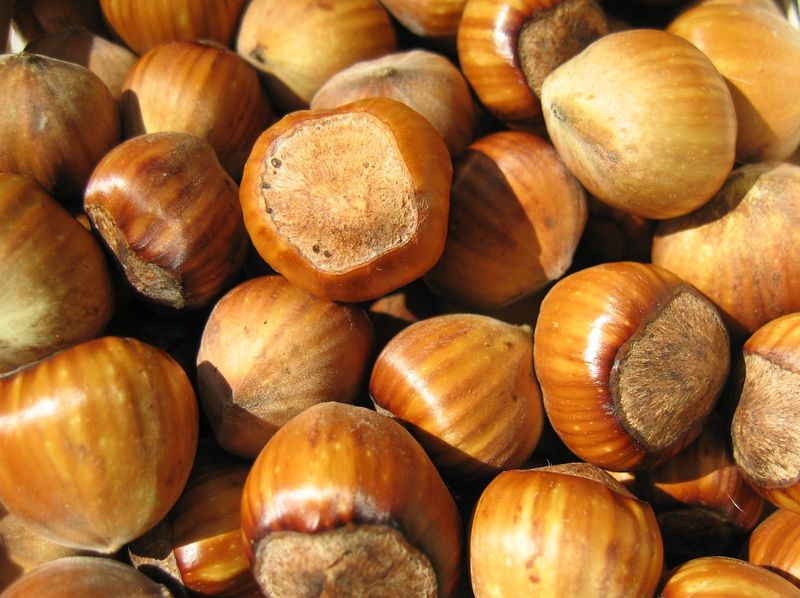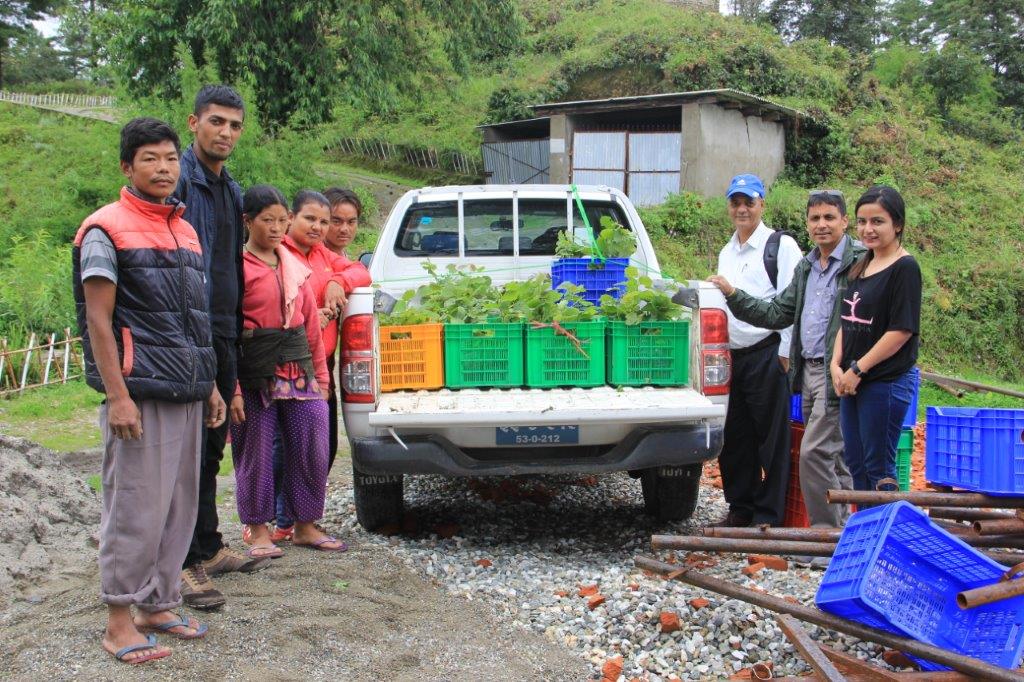In partnership with HICODEF, TGT has been enabling climate change adaptation in the district of Deurali, Nawalparasi for more than three years.
Improved cooking stoves – Sankhuwashaba
Higher Education programme – Kavrepalanchok
In partnership with the Geography and Environmental Science department at the University of Southampton (UK) and the Environmental Science department of Tribhuvan University (Kathmandu, Nepal) The Glacier Trust funded and facilitated a three-week research project in Kavrepalanchok (‘Kavre’). Two students from the UK and two students from Nepal were selected to participate.
Munro bagging for Nepal
Mary Peart is a former head teacher of GSIS school, Hong Kong and a lover of Nepal. She approached us 18 months ago to propose a partnership between GSIS and TGT. Next week that partnership will finally become tangible as 12 students from GSIS arrive in Nepal to meet up with TGT, our partner NGO EcoHimal and the community of Deusa, Solukhumbu.
Through the partnership, GSIS will form a link with Deusa that will extend for three years and see students and teachers making an annual educational trip the Deusa Agro Forestry Resources Centre (AFRC).
At the AFRC the students will spend time with local children, tour the project work that TGT is enabling and have a go at some climate change resilient agriculture. They will also be trekking through some of the most beautiful scenery in the world.
GSIS have also committed to raising money for TGT’s work in Solukhumbu; an invaluable source of funding for our work.
Mary Peart is leading the way in the fundraising effort. Now living in Scotland, Mary decided to set herself the challenge of ‘bagging’ six ‘Munro’ mountains in 2018. ‘Bagging’ means to successfully climb, the Munro’s are the Scottish mountains of 3,000 ft or more. There are 282 in total, Mary is attempting to climb the six in her new home area, Torridon.
So far Mary has climbed four out of six. She sent us some stunning images. They are beautiful and give us a great sense on how tough a challenge she has taken on!
Mullach an Rathain on Liathach
Sgurr Mor on Ben Alligin
Tom na Gruagaich from Ben Alligin
Four down two to go, but first a trip to Nepal. Mary will be joining Morgan and two teachers from GSIS in Nepal next week.
Mary has so far raised £675, she hopes to raise £800 (or more). If you would like to sponsor her and give her motivation to ‘bag’ those last two Torridon Munro’s on her return to Scotland, please visit her sponsorship page.
Report from student trip to Kavre
Last month, two UK students, Tom Webber and Katherine Reid, from University of Southampton, traveled to Nepal to carry our research from their MSc dissertations. In Nepal, they teamed up with our Co-Director, Richard, colleagues from Eco Himal and two students, Sarsaswoti and Amrit from Tribhuvan University on a field trip to the Earthquake hit district of Kavre.
The study visit forms part of TGT's higher education programme. Our aim is to build the climate change adaptation knowledge, skills and experiences of higher education students from Nepal and around the world.
Katherine has written up a brief report on her experiences in Nepal and a summary of the research she carried out:
Our trip to Nepal lasted for 18 days and is surely one of the more eye-opening experiences I’ve had the privilege of having. Our study sight of Kavre is a mere 3 hours’ drive from the capital of Kathmandu but the disparities in recovery between the two locations is stark. Whilst initial research into the aftermath of the 2015 earthquakes alerted me to this, seeing it for myself placed a whole new perspective on the livelihoods of the Karve residents.
My research is focussing on the social capital of Kavre before and after the earthquakes. I wanted to understand how the earthquakes changed the social structure and interaction of residents in the area, how people came together, how they survived, how they have adapted and what they believe their future prospects look like. The support and hard work of Eco Himal, The Glacier Trust and two postgraduate students from Tribhuvan University gave us the unique opportunity to conduct focus group interviews with a wide range of social groups across all four wards within our study site.
We spoke to 18 different groups totalling 48 representatives of the four wards and collected over 18 hours of data. The thoughts and perspectives of participants were invaluable in understanding the reality of peoples’ situations and allowed us to be educated on the truth of recovery and rebuilding procedures in Nepal. We used a data collection method that utilised a focus group scenario to allow the participants to impart their knowledge to the researcher – the participant became the teacher and us researchers the students, allowing the uninterrupted passing of knowledge and ensuring the experiences and realities of Kavre residents to be captured from their perspective.
Initial observations showed that, although the project area was receiving various forms of aid in the form of infrastructure and finances, there was often a miscommunication between the aid provided and the aid required. The data collected is invaluable to my aim of producing the beginnings of a social vulnerability reduction framework – something that I hope will add to the research field of disaster recovery. Based on my initial observations I wish to create a framework in order to streamline the link between supply and demand, ensuring reduced vulnerability and maximum recovery.
None of the work achieved would have been possible without the help and support of The Glacier Trust, Eco Himal and the students from TU – their work is both inspirational and imperative to the recovery of Kavre.
Both Tom and Katherine are working hard writing up their dissertation's now. Once they have handed those in we will work with them to produce two full length reports on what they learned in Nepal.
Can we grow Hazelnuts commercially in Nepal?
Climate Change adaptation in the Himalaya's requires a strategic approach. As the seasons become less predictable and temperatures rise, the precariousness of traditional subsistence farming becomes more acute. A strategy that is gaining popularity through our projects is the cultivation of high value 'cash' crops.
We have reported several times already on what is quickly becoming a coffee growing revolution in Deusa, but it isn't the only crop being grown in this beautiful corner of Solukhumbu. In this article, agricultural expert and our Co-Director and in Nepal, Richard Allen, explains why The Glacier Trust, EcoHimal Nepal and the Deusa Agro Forestry Resource Centre are trialing Hazelnut production in Solukhumbu.
Introduction
In an effort to diversify the crops grown by the farmers of Solukhumbu District, The Glacier Trust has begun to introduce hazelnuts to the potpourri of tree crops supported by The Glacier Trust’s Agroforestry Resource Centre (AFRC) in Deusa.
Deusa AFRC manager Keshab Rai receives first batch of Hazelnut seedlings in 2017.
On the domestic front, Nepal imports 90% of the nuts consumed in the country, and there is a small market to satisfy. In the 2016-17 fiscal year, Government data recorded that fruit and nuts worth a staggering Nepali Rupees 11.23 billion were imported into the country – currently equivalent to £76.40 million.
There is a huge cash-crop opportunity for the farmers here in growing tree crops, there are environmental advantages, and after the first few years, orchards and plantations are generally easier to manage, requiring less labour and time – this is so important as across south Asia, there is rural to urban drift of young people, less labour available on the farms, and in Nepal in particular, many of the young men have gone abroad for paid employment.
Hazelnut seedlings planted in a Polytunnel at Deusa AFRC
The hazelnut is a very interesting crop and has a big international market which is booming (next time you are in the supermarket, check out the number of chocolates that have hazelnuts in them, and the sales of Nutella and other spreads etc.). Turkey produces around 75% of the world’s hazelnuts – but the orchards are old, not very well managed and productivity is declining.
Hazelnuts, kattus in Nepali, grow at altitudes between 1,600 and 3,000 metres above sea level in the Himalayas, and after the first three years, are relatively easy to manage. In those crucial first years, it is important to protect them from browsing by stray cattle and wild deer, and to irrigate them once a week during the dormant winter period between December and February. After that, it is relatively plain sailing as serious diseases, such as the eastern filbert blight that has affected orchards in Oregon state in the USA, are not present in south Asia. Although an indigenous variety of hazelnut exists in Nepal, there are no commercial orchards of either indigenous or higher yielding varieties.
Why Hazelnuts?
Besides the economic reasons, hazelnuts are a tasty, healthy food product that is well-suited for growing in the Himalayas. They have many uses, from nut-spreads and chocolates to savory dishes and salads. These tree nuts are high in protein, healthy unsaturated fats (primarily oleic acid), thiamine, manganese, copper, vitamin E, vitamin B6, and antioxidants.
Hazelnut trees are thriving in Bhutan’s pristine conditions, and we are confident they will also thrive in the rural mid-hill areas of Nepal with the clean mountain waters, fresh air, and good soils, the great majority of which are undamaged by the use of fertilizers, pesticides and herbicides.
The Mountain Hazelnuts Project in Bhutan
Through contacts I made when working for the Mountain Hazelnuts Project (MH) in Bhutan during 2016-2017, and a former Trustee who earlier worked in Nepal, arrangements were made with MH management to import 1,000 hazelnut saplings to Nepal in late 2016 to carry out trials in four different parts of Nepal, one of which was our Solukhumbu-Deusa AFRC site.
Mountain Hazelnuts Project is a private-public partnership, and the first MoU with the Government of Bhutan was signed in 2009. Since then, it has grown from a small business to the biggest employer in Bhutan (excluding the Government) with 800 staff employed and over 120 field staff stationed throughout the country in the 18 districts where hazelnuts are now planted and growing well. In addition, 1,200 people are engaged in support services related to MH operations, this including private trucking, local businesses, and construction companies.
A few key points about MH:
Primary activities since 2011 have been: establishing the world’s largest hazelnut nurseries in 4 locations across the country, providing hazelnut seedlings to farmers, and delivering training and support for the thousands of participating farmers through the extensive team of monitoring and extension MH employees;
To date, over 7 million trees have been distributed to more than 8,000 farming households with a registered hazelnut area of over 10,000 acres;
First small harvests were collected in 2016 and 2017 from the trees planted in the early days in the east of Bhutan and the first of four planned processing factories is now up and running - the nuts are collected by MH and once harvests are significant, premium nuts will be exported to the main world markets.
Mature and well kept Hazelnut orchard in Bhutan
The MH vision includes both socio-economic and environmental benefits:
Farmers partnering with MH to grow hazelnuts are expected to double their annual income, with significant spin-offs to local service providers;
Long-term financial security to hazelnut growers, ensuring education for children;
Expected full capacity work force of over 1,000 employees;
Additional benefits to local contractors and communities (currently already over 1,200 people benefited) as operations expand;
Generation of tax revenues in US$ for RGoB through export of nuts.
Introducing Hazelnuts to Nepal
MH very kindly and with great enthusiasm organized the export and import and transportation of hazelnut saplings from Bhutan to Nepal. The original germplasm material is prepared in laboratories in Kunming, China and then exported to Bhutan, raised to the seedling stage in the MH nurseries and then acclimatized through different nurseries at increasing altitudes before being delivered to the farmers.
The 1,000 seedlings from Bhutan arrived in Nepal in December 2016, along with senior MH research staff member Sonam Rapten, who along with local resource persons supervised the transportation of the seedlings to four pre-arranged sites in different parts of Nepal and acclimatized there before being planted out.
The Hazelnuts in Deusa
One of the selected sites was TGT’s AFRC in Deusa, Solukumbu, where the seedlings were well cared for under TGT’s Integrated Sustainable Tree Cropping and AFRC Programme by AFRC manager Keshab Rai and Agriculture Technician Hari Kumar Karki – survival and growth condition are regularly monitored, and irrigation, manuring and weeding provided as necessary. Employing the instructions and training from MH staff, 430 hazelnut seedlings were planted out into orchards during the second half of August 2017. At the time of writing, 93% of the planted trees have survived, as we approach the seedlings second monsoon season.
Hazelnut plants are transported from Deusa AFRC to the field where they now grow in a small protected orchard.
The AFRC is working closely in the project area with the Prime Minister’s Agriculture Commercialization Programme (PMACP), which has shown great interest in the development of the hazelnut trials and demo orchards. AFRC Manager Keshab Rai has recently been selected as chairperson of the PMACP and is playing a leading role in exposure and communication, with farmer to orchard visits being arranged on a regular basis.
With the possibility that MH in Bhutan will expand operations into Nepal in the medium term future, our farmers in Solukhumbu may well be ahead of the game and lead the way in this exciting new venture.
55 years old and learning to grow vegetables for the first time
This is Tej Kumari Thada a resident of Dhabaha village in Hupsekot where TGT has been working with HICODEF since 2015 to enable climate change adaptation.
Tej Kumari Thada tending seedlings on her farm in Dhahaba.
Tej is 55 years old and has been subsistence farming for three decades in the foothills of the Himalaya. Her livelihood, already precarious, has been further threatened by climate change. The TGT funded HICODEF project ECCLA (Enhancing Community Capacities for Learning and Adaptation), has transformed her life.
Tej only started vegetable farming three years ago after joining a Farmer's field school run by HICODEF. Prior to this, she had no previous experience or knowledge of vegetable farming, she had never grown crops like tomatoes, cauliflower or cabbage before. This is the difference that our work is having, it is enabling farmers to adapt to climate change and improve their livelihoods through agriculture.
Tej now has tomato crops growing on one katta of land (0.33 hectare) and other seasonal vegetables planted on a further 3 kattas. She is using a sprinkler for irrigation that was funded by TGT and has been selling vegetables at the local market.
She told our contact at HICODEF, Surbir Sthapit, that the vegetable farming has really engaged her and that her land is now covered with vegetables. Tej is now earning enough from farming to feed her family adequately the whole year round and with an improved diet.
In 2018, she has so far sold 100 kg of tomato, 25 kg of onion, 50 kg of cauliflower and cabbage, 7 kg of beans, 6 kg of bitter guard, 8 kg of chili and 5 kg of green leafs, a total of 206 kg of produce. This has earned her 30,000 Nepali Rupee; around £200.
We are enabling thousands of farmers in Nepal to adapt to climate change through agriculture. This improves livelihoods and the life chances of some of the poorest people in the world.
This is all made possible thanks to your generous support. Thank you.
Great progress in Kavre
As part of our Higher Education Programme, four students (two British, two Nepali) have been in Kavre on a study trip this month. Their research has been going very well. We caught up with one of the students, Tom Webber, earlier this week who filled us in on how things are progressing:
I thought this would be a good opportunity to update everyone on how our work is going.
Since arriving in Kavre last week I’ve had a fantastic time getting to know the local people and experiencing a totally different lifestyle to that of which I’m used to. The level of community spirit and mutual support of each other is something we could really learn from in England.
Due to a combination of excellent support from EcoHimal, good health and fortunate weather conditions have meant we are far ahead of schedule.
I’ve been able to speak with a wide range of people including schools, women and mothers groups, agricultural works and shop owners. Their experiences of water access prior and post earthquake have been incredibly varied and some very interesting points of view have been made. One thing that has particularly stood out to me is how resilient the people of Kavre are in spite of difficult conditions and how important NGO help is to their livelihoods due to the lack of government support given to many.
I’d like to take this opportunity to thank both The Glacier Trust and EcoHimal for making this work possible and providing such great support throughout.
Tom is looking at water infrastructure in Kavre, he'll be providing us with a full report on this findings. Judging by the photos he has sent through, it will be an interesting read





















